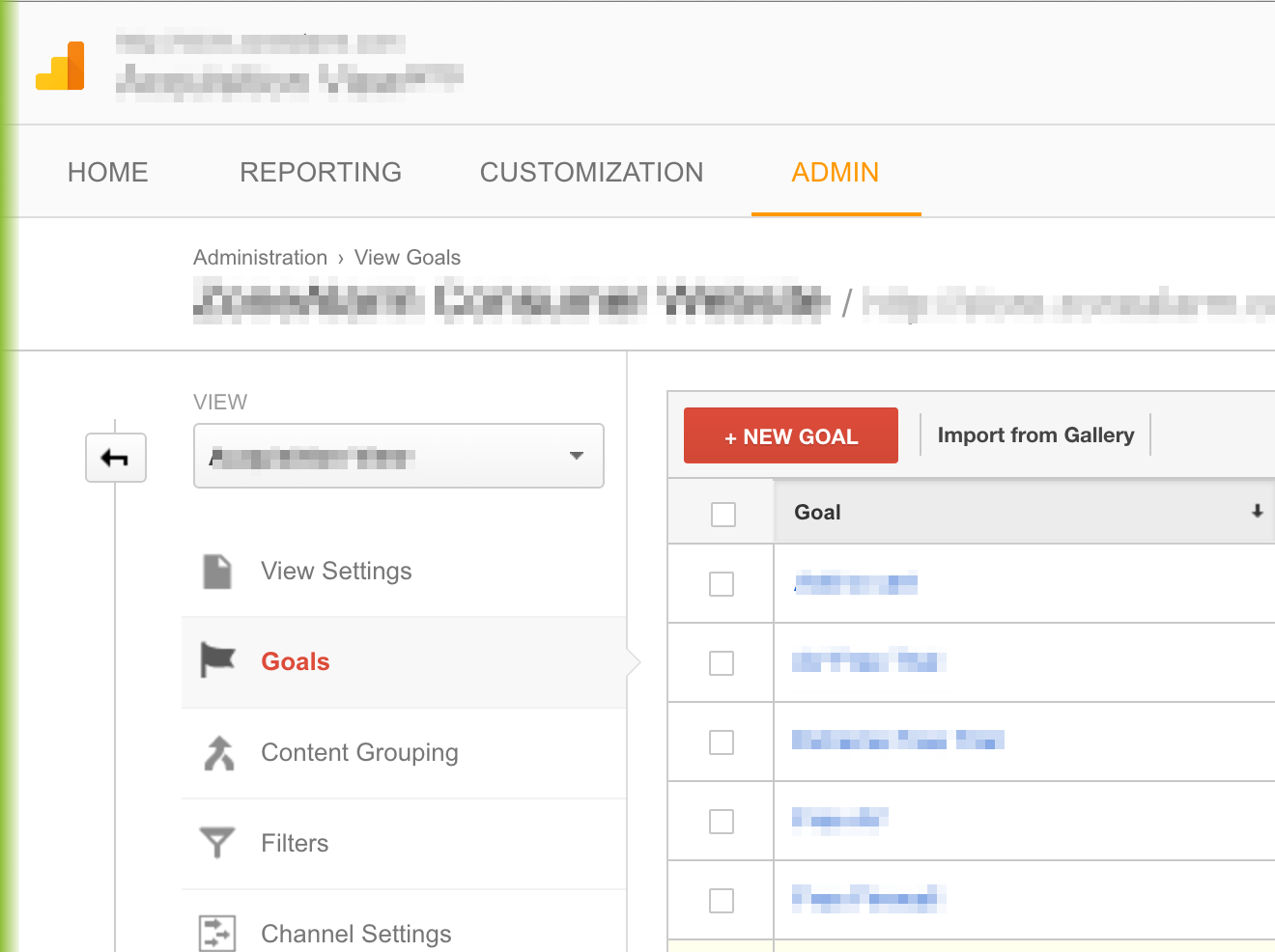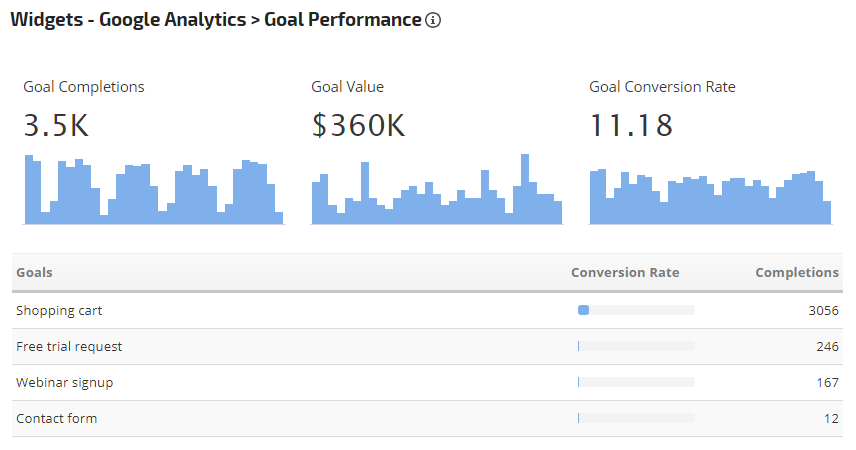Exploring What Data Is Google Analytics Goals Unable to Track
Exploring What Data Is Google Analytics Goals Unable to Track
Blog Article
Introducing the Blind Spots: Recognizing What Google Analytics Goals Can not Measure
In the realm of digital analytics, Google Analytics stands as an effective tool for tracking and evaluating on the internet customer interactions. Recognizing what Google Analytics objectives can not determine is vital for obtaining an extensive sight of user habits and involvement.
Individual Actions on External Platforms
Understanding how individuals engage on external platforms is critical for optimizing on the internet techniques. External systems, such as social media sites networks, recommendation sites, and on-line discussion forums, play a significant duty in driving web traffic to a company's website. By examining customer behavior on these systems, companies can acquire important understandings into the efficiency of their marketing initiatives and the choices of their target market.
One secret aspect of customer behavior on outside systems is the recommendation resource. By tracking where the customers are coming from, services can identify which platforms are driving the most traffic to their website. This details can aid companies allocate their resources extra successfully, concentrating on the platforms that yield the best outcomes.

Offline Conversions and Communications
Assessing user behavior on exterior platforms supplies beneficial understandings into on-line strategies; nevertheless, thinking about offline conversions and interactions is equally imperative for a comprehensive understanding of a firm's overall efficiency. While Google Analytics excels at tracking online interactions, it drops brief in capturing the complete consumer trip that frequently consists of offline touchpoints. Offline conversions, such as in-store acquisitions or phone queries, play a considerable function in lots of companies' success. Overlooking these interactions can lead to an altered sight of the efficiency of advertising projects and general service performance.

Attribution Beyond Last Click
When diving into the world of electronic advertising analytics, it comes to be vital to look beyond the single touchpoint of the last click for a much more comprehensive understanding of attribution. While Google Analytics gives important insights right into user habits, counting entirely on last-click attribution can be restricting - what data is google analytics goals unable to track. Acknowledgment versions that go past the last click provide a more nuanced view of the consumer trip, taking right into account all the touchpoints that cause a conversion
Attribution past the last click permits marketing experts to assign credit history to numerous interactions along the conversion path, offering a more clear image of the performance of various advertising and marketing networks. By discovering multi-touch attribution designs such as straight, time decay, or position-based attribution, services can much better allot their marketing budgets and enhance their strategies for optimal effect.
Recognizing the influence of each touchpoint in the conversion procedure is crucial for making informed choices and maximizing ROI. By embracing acknowledgment past the last click, organizations can get deeper insights into client habits and customize their advertising and marketing initiatives a lot more efficiently.
Cross-Device and Cross-Browser Monitoring

Similarly, cross-browser browse around this site monitoring matches cross-device monitoring by capturing customer behavior as they switch over between different web browsers. Recognizing exactly how users communicate with sites on various internet browsers can aid marketing professionals maximize their online experiences to make sure consistency and capability across various systems.
Qualitative Information and Individual Intent
Recognizing customer intent through qualitative data evaluation is vital for developing targeted electronic advertising techniques that reverberate with the requirements and preferences of the target audience. Qualitative information gives understandings into the 'why' behind individual actions, losing light on inspirations, feelings, and choices that quantitative data alone can not capture. By examining customer responses, comments, and interactions, marketing professionals can uncover important info concerning customer intent, enabling them to customize their messaging, material, and offerings to much better line up with what their target market is looking for.
Qualitative information also assists in recognizing the context in which find more individuals involve with a web site or application. This contextual understanding allows marketers to produce even more appropriate and customized experiences, inevitably driving higher interaction and conversion rates. By diving into individual intent through qualitative information analysis, organizations can gain a deeper understanding of their target audience, causing much more effective advertising and marketing techniques that meet users' needs and assumptions.
Verdict
In verdict, Google Analytics objectives have constraints in measuring customer actions on exterior platforms, offline conversions, acknowledgment beyond last click, cross-device and cross-browser monitoring, and qualitative information connected to individual intent. what data is google analytics goals unable to track. It is necessary for companies to be knowledgeable about these blind areas in order to supplement their information evaluation with other devices and techniques to gain an extra official website comprehensive understanding of their target market and boost their general digital advertising and marketing approaches
By analyzing user behavior on these systems, services can get important understandings right into the efficiency of their marketing efforts and the choices of their target audience.
Assessing customer habits on outside platforms offers valuable understandings into online approaches; nevertheless, taking into consideration offline conversions and interactions is similarly crucial for a thorough understanding of a business's general efficiency.In electronic advertising analytics, relocating beyond last-click attribution to explore cross-device and cross-browser tracking is necessary for acquiring an all natural understanding of user interactions throughout various systems and gadgets. By examining customer feedback, remarks, and interactions, marketing professionals can reveal beneficial details about user intent, enabling them to tailor their messaging, web content, and offerings to better align with what their audience is seeking.
By diving into customer intent via qualitative data analysis, companies can gain a much deeper understanding of their target audience, leading to a lot more efficient advertising and marketing methods that fulfill individuals' assumptions and demands.
Report this page